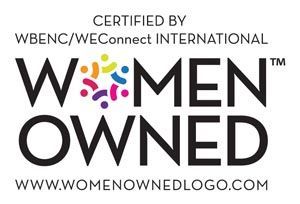Kindness really doesn’t go out of style and become less important, yet looking around in a post-pandemic world, it may seem like it.
Just recently, I attended a convention where Linda Cohen was the speaker. Linda is the author of a couple of books on kindness; her most recent is the Economy of Kindness – How Kindness Transforms Your Bottom Line. I was intrigued, and in between taking photos of the event, I listened.
One of my favorite quotes – and one that I quote often – is something from Maya Angelou, “I’ve learned that people will forget what you said, people will forget what you did, but people will never forget how you made them feel.” And it’s true. For me and everyone else.
Over a career that spans decades working with associations, I have personally spoken to many associate/affiliate and association members who are not engaged because of some perceived act of intolerance, meanness or slight that, in many cases, happened years ago from someone in the association office – probably unknowingly. But that experience was enough for that member to hold a grudge. They may still be a member but are essentially disenfranchised, and it may take years to get them to actively rejoin.
Many years ago, an auto dealer determined the lifetime value of a customer to his dealership (today’s estimate, by the way, is roughly $175,000 in terms of vehicle purchases, referrals and service work) and focused on providing his customers with a positive experience and wrote a book. Within the auto industry – and outside it – the book became a sensation. It was read and quoted in 20 Groups for years and is still a customer service standard. The base concept of the book was essentially thoughtfulness and – you guessed it – kindness. It worked then; it works now. Kindness really doesn’t go out of style and become less important, yet looking around in a post-pandemic world, it may seem like it. I think it’s easy to lose touch with how others perceive your words and actions.
We judge ourselves by our intentions and others by their actions.
In the association world, membership experts have always advised associations to use the Lifetime Value (LTV) metric to understand how much revenue an average member brings to their association. With this dollar amount in mind, you can make better decisions about your budget for recruiting, onboarding and engaging new members. But you can also make a mental note that if one of these members leaves or becomes disenfranchised due to someone’s thoughtless actions, there’s a real monetary consequence.
The formula for LTV is dues + non dues revenue x average tenure = LTV. Here’s a simple way to calculate it:
Membership dues = $700/year
Average non-dues revenue per member = $1,000/year
Average membership tenure = 10 years
Lifetime Value (LTV) of a member = $17,000
But revenue isn’t the only value a member brings to your association, right? Members contribute in many other ways to bring value to the membership experience, help your association achieve its goals, and take on tasks that would otherwise be assigned to staff or temporary workers, for example:
- Volunteering as a membership ambassador during new member onboarding or as an event buddy, for a first-time attendee
- Sharing advice in the online community
- Recruiting new members
- Dedicating time and expertise as a subject matter expert or instructor
- Helping to develop standards
- Presenting at a conference or webinar
- Writing articles or doing peer reviews
- Serving on a board, committee or other national or chapter governance group
- Communicating or meeting with federal or state policymakers
The challenge here is placing a dollar value on these intangibles. You could look at the cost of hiring someone to do the same work, but that only takes you so far. If your association uses an engagement score, you could put a monetary value on that score.
The lifetime value of members is usually used to look at members in aggregate. But I would encourage you to apply it to individual and company members, as it may help quantify that one-to-one, more personal value for association staff.
Taking this a step further, some members are more valuable because they’re more likely to participate in association activities and programs. They’re more invested in their relationship with your association. They both give and receive more value than other members.
LTV data provides feedback to adjust models within an organization, but I would suggest that it should also provide feedback for looking at how your members, associate/allied members, staff and colleagues are treated, with kindness being part of the model.
A culture where members (and employees, for that matter) feel valued, recognized, and empowered enough to go the extra mile for each other and where the leadership is able to be authentic, transparent, and connected is contagious – which after the past two years is something we should all be used to – but this type of contagious is the good kind (no pun intended).
After delving into the kindness economy on our own (see our article, Why Being Kind at Work Matters), we had the opportunity to spend some time with Linda, and that interview is on the next page. I would encourage you all to read her book; it’s well worth the time and hopefully will impact your organizations for the better.
We all appreciate being treated kindly.








